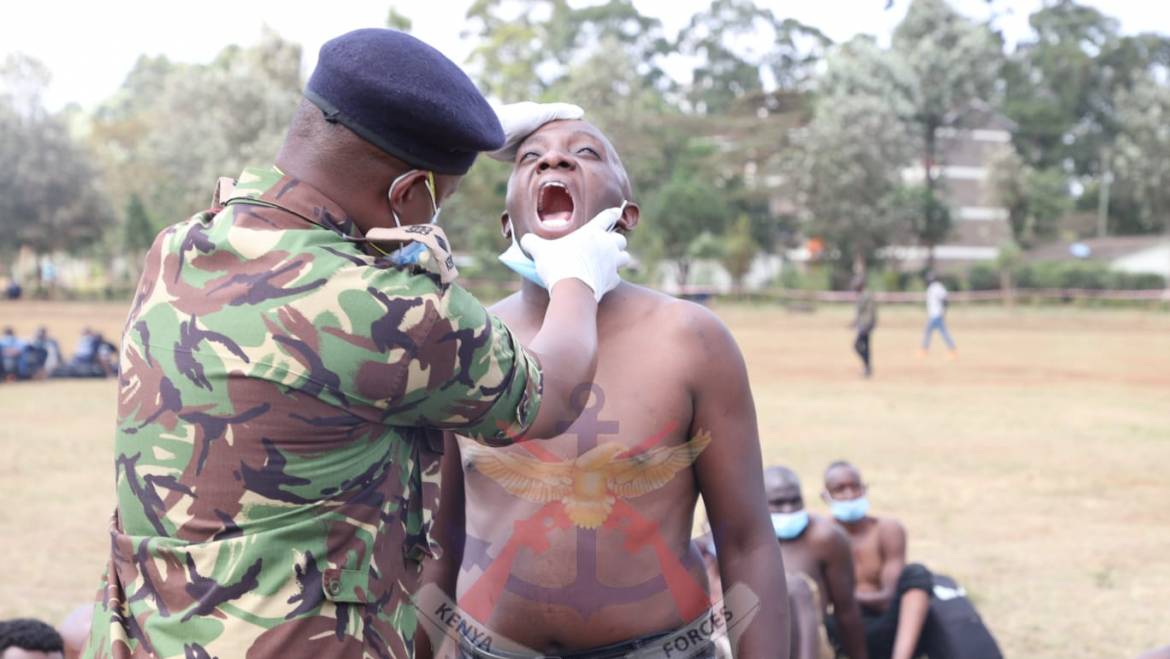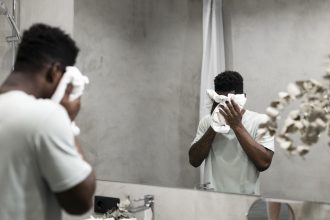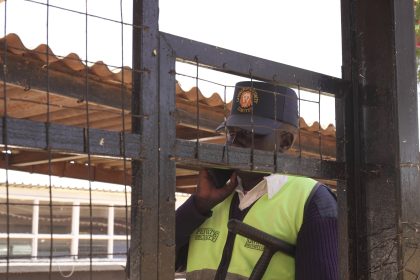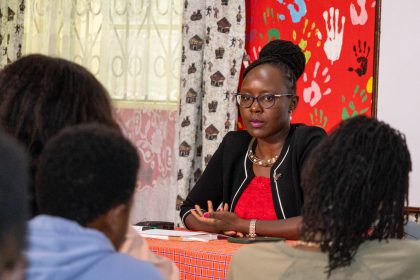‘Overly discoloured teeth could indicate underlying bone infections,’ explains Lieutenant General Jonah Mwangi. ‘Recruits run five kilometres to gauge cardiovascular fitness, stamina, and physical capability.
The Kenya Defence Forces’ (KDF) recruitment process is engineered with military precision, where every health check serves an operational purpose. Far beyond basic medical screenings like HIV status, critical health criteria include vision (including cross eyes), hearing tests, dental health, height, weight and flat feet.
The comprehensive biometric evaluation is designed to identify only the most physically fit to defend the nation.
See, in military service, the body is the primary tool – and only the most perfectly calibrated tools make the cut. These requirements, though perceived as harsh, are integral to military service.
Col Dr Bernard Edalia, senior medical officer at Eldoret Recruits Training School, emphasised in the KDF documentary A KDF Soldier that recruits with medical conditions risk severe complications due to months of intensive and demanding exercises.
Dr Edalia warned that recruits with past medical treatment, substance abuse, or rehabilitation histories struggle most during training. “When exposed to the stresses of training, they may develop adjustment disorders.
Candidates with cross eyes are excluded as good vision is critical for safety, efficiency and operational effectiveness. Clear and aligned eyesight is essential for surveillance, rapid decision-making, and immediate reactions in high-risk situations. Impaired vision could not only compromise an officer’s performance, but also the safety of their unit.
Recruits run five kilometres to gauge cardiovascular fitness, stamina, physical capability
As for teeth, Lt General Jonah Mwangi explained on Citizen TV’s JKL Live Show that “Overly discoloured teeth could indicate underlying bone infections.”
Additionally, Mwangi explained that recruits run at least five kilometres before undergoing a thorough medical examination. This is usually to gauge cardiovascular fitness, stamina, and physical capability while potentially revealing hidden medical conditions like heart or respiratory issues that could be missed during a resting examination.
Recruits with underlying medical conditions often faint or, in extreme cases, die, primarily due to undiagnosed health issues.
For instance, in September 2023, Francis Wachira Kabuga collapsed during a physical recruitment test at Kianyaga Stadium in Kirinyaga County. The cause of his death remains unclear.
In August 2022, a 27-year-old recruit died in Kericho County due to extreme physical exertion and possible underlying health issues. Similarly, in 2017, a 25-year-old recruit collapsed after fitness tests in Nakuru County under comparable circumstances.
But similar deaths hardly happen to women during recruitment, which Major (Rtd) Suleiman Sumba pegged on a mix of biological, physiological, and societal factors. Physiologically, women have a lower tendency to push themselves to extreme physical limits under competitive environments, unlike men, who exert themselves to impress recruiters.
Military recruiters lower physical standards for women due to biological differences
Maj (Rtd) Sumba also notes that women have fewer recruits, hence the lower rate of recorded fatalities, and the few who turn up have “a more cautious mindset, balancing ambition with self-preservation” and some drop out when the going gets tough.
“Men who are even ailing will give it their best without caring about tomorrow,” says the officer.

Maj (Rtd) Sumba, also President of the Taekwondo Federation of Kenya and a part-time sports science lecturer, explains that military recruiters often lower physical standards for women due to biological differences. For instance, while men may need to run five kilometres, women might only run two laps around a football field.
Willow Health found that concealing a medical condition without a waiver risks dishonourable discharge for fraudulent enlistment under the KDF Act (2012).
Lt. Gen. Jonah Mwangi stated KDF’s strict height/weight standards ensure recruits can withstand military demands: men must be at least 5.3ft (54.5kg), women 5ft (50kg). Shorter recruits often struggle with weight retention during training, jeopardising their ability to handle standard 18-25kg loads—exceeding 25kg for graduates, as “It becomes impossible for someone to carry their own weight in such conditions.”
Flat feet weaken load-bearing ability, critical for carrying heavy gear over long distances
Flat feet (pes planus) disqualify Kenyan military and police recruits due to the physical strain of uniformed roles. Without proper arch support, the condition causes biomechanical imbalances—especially during running, marching, or combat—leading to injuries like stress fractures, plantar fasciitis, and ankle instability, according to research on how flat feet disrupts biomechanics.
A September 2023 ScienceKnow.net report on flat feet in military service notes that in combat scenarios, these issues cripple mobility, hindering agility and endurance. Flat feet also weaken load-bearing ability, critical for carrying heavy gear over long distances, eroding operational readiness.
While orthotics, specialised footwear, and physical therapy can mitigate pain and improve stability, the risks remain high for high-intensity roles like infantry, added the report.
Good hearing is essential – military work involves constant loud noises like gunfire and explosions. Existing hearing problems will worsen, with studies showing high risks of permanent ringing (tinnitus) and hearing loss from prolonged exposure.
Recruits need full hand mobility. Automatic disqualification applies if you can’t make a tight fist, pick up small objects and touch your thumb to three or more fingertips.
For joint mobility, a recruit must lift arms straight forward and sideways to shoulder height (like making a “T”), bend elbows enough to nearly touch the shoulder, and move wrists up/down and side-to-side comfortably.
The hands should rotate halfway between palm-up and palm-down positions and all these abilities are essential for handling weapons, carrying gear, and performing field operations safely.
Deformed testicles can indicate underlying endocrine disorders that affect hormone production
When he was Defence CS, Aden Duale was tasked by MPs regarding a recruit rejected for deformed testicles. Teso South MP Mary Emase argued that it was unfair discrimination, but Duale maintained that such conditions warrant disqualification due to the military service’s physical rigours. When pressed by the Speaker for details, he deferred to a closed-door briefing.
But according to military medicine protocols, testicular abnormalities can indicate underlying endocrine disorders that affect hormone production, particularly testosterone levels critical for muscle development and bone density under combat stress. The American College of Military Medicine notes that conditions like cryptorchidism (undescended testicles) or testicular atrophy may signal broader reproductive health issues that could compromise performance in extreme environments.
Dr James Mitchell, in Military Medical Standards, explains that testicular deformities can also increase injury risk during physical training, as abnormal positioning makes the organs more vulnerable to trauma during combat manoeuvres or equipment use. Additionally, certain testicular conditions require ongoing medical monitoring that may be impractical in deployment scenarios.
A serving Kenyan soldier confirmed to Willow Health that military medical examinations include comprehensive genital and anal inspections, which a military medic later explained that “absence of both testicles or an unexplained missing testicle disqualifies a candidate as genital abnormalities can lead to discomfort and restricted mobility.”
Tattoos and deep scars clash with military discipline, professionalism, uniformity
The military medic further added that women with “prolonged menstrual bleeding or amenorrhoea are also excluded, as that points to underlying medical conditions.”
The soldier further explained that recruits also undergo urinary system evaluations using X-rays and checks for anal fissures or abnormal growths. “Such conditions could worsen under the intense physical training, which is why these checks are mandatory,” he said.
Tattoos and deep scars often disqualify military recruits, though these rejections stem from cultural, religious, and operational concerns rather than medical science. KDF recruitment standards focus on medical, physical, spiritual, and moral fitness.
Tattoos clash with military discipline, professionalism, and uniformity and according to Lt Gen Mwangi insists “character counts.”
Beyond appearance, tattoos reveal personal details that enemies could exploit during capture. In covert operations, they become identifying markers that compromise anonymity and mission safety. Tattoos also raise medical red flags during recruitment—they can hide contagious skin conditions or infections that health assessments must catch.
Deep scars, especially fresh ones, could suggest previous injuries or surgeries that could undermine a recruit’s stamina under training’s brutal demands. Both tattoos and scars are thus operational liabilities—medically and tactically.
In the KDF documentary, A KDF Soldier, Col Meshack Kishoyian, Recruits Training School Chief Instructor, recruits “are often ‘broken down’ by the physical demands of the training”, which is deliberately tough to build resilience progressively for sustained physical and mental effort from both recruits and instructors.
Brief History: Early recruitment favoured “warrior communities”
Colonial-era recruitment prioritised physical strength and loyalty to the British Crown. After independence in 1963, the Kenya Defence Forces reformed recruitment to emphasise merit, discipline, and patriotism, according to the Ministry of Defence.
Regional representation also evolved dramatically. Early recruitment favoured “warrior communities” like the Nandi and Kipsigis, who had proven themselves against colonisers, while sidelining other groups. Recent efforts ensure equitable representation across Kenya’s 47 counties, creating a military that reflects the nation’s ethnic and regional diversity.
This shift reduced favouritism perceptions and fostered national unity. Sometimes, stringent medical, physical, and academic criteria get adjusted for inclusivity—enabling Kenya’s smallest tribe, the Elmolo, or constitutionally mandated women to serve.
Gender inclusion transformed military culture. Men dominated military roles until the 1990s, when policy changes began opening doors for women. The KDF now recruits women for combat positions, marking a shift toward gender equity.
The Ministry of Defence reported in 2014 that approximately 1,000 women served among over 30,000 KDF personnel—just three per cent of the total force. By 2017, a new gender policy boosted women’s participation in peacekeeping operations. Women now comprise 19 per cent of Kenya’s peace deployment forces.
This article was first published by Willow Health Media on May 28, 2025.



























